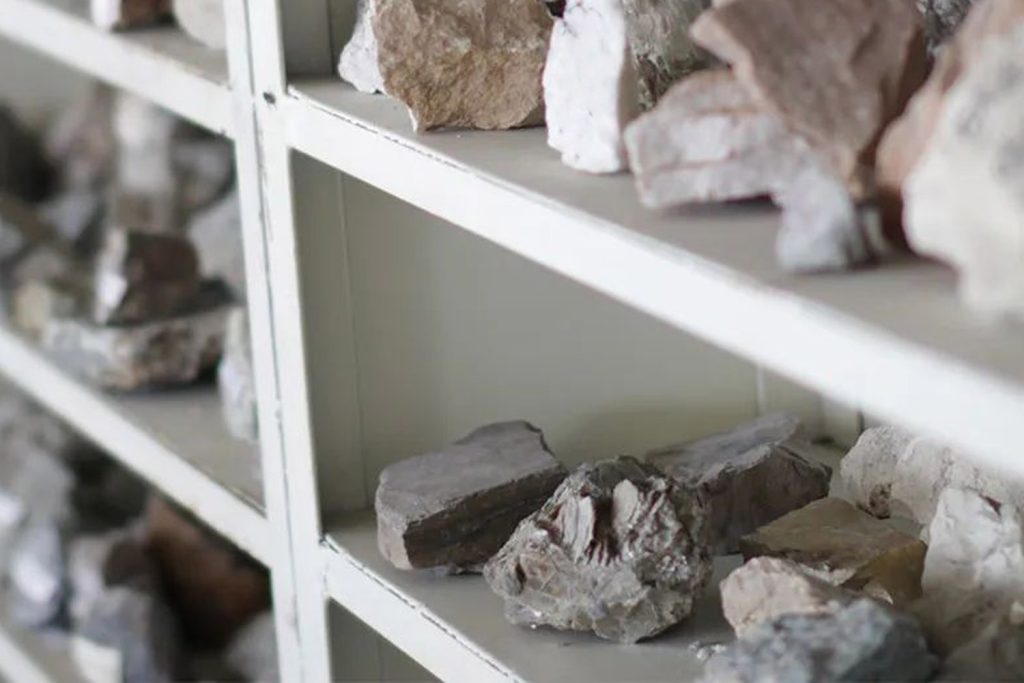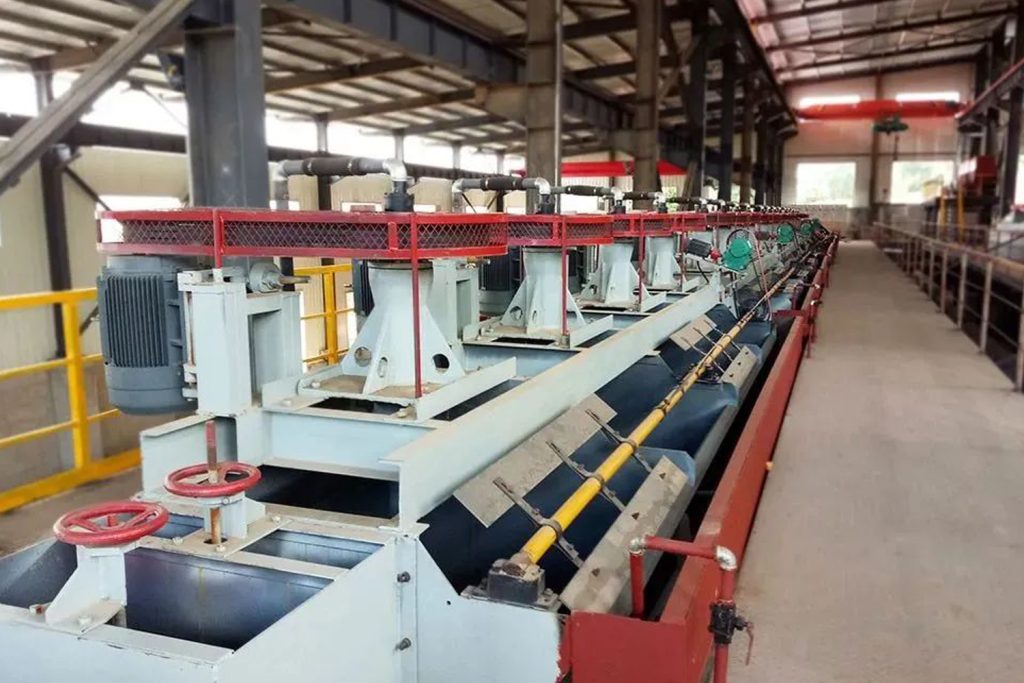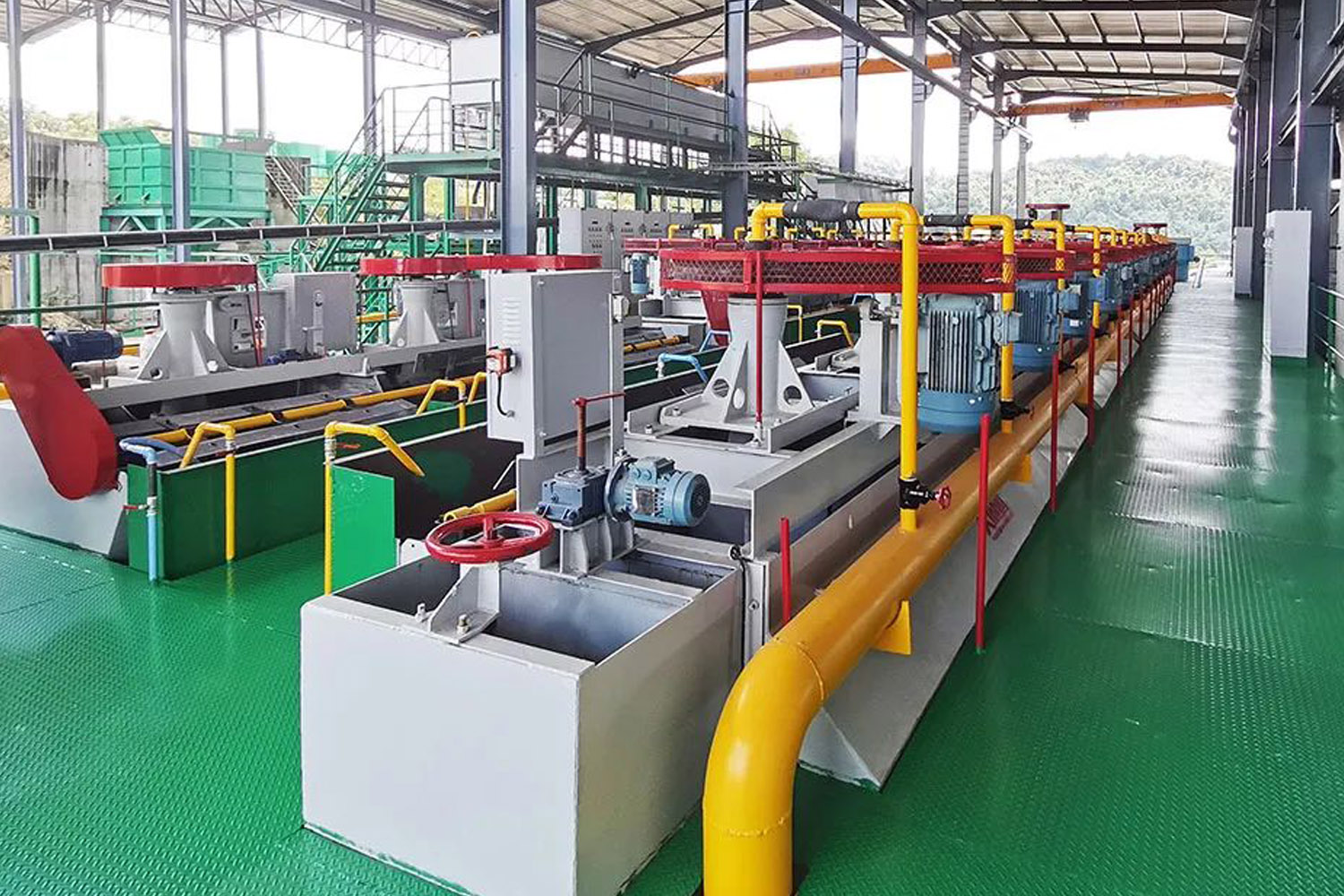Skarn-type tungsten ore accounts for 40% of the proven reserves in China. Its ore body is lens-like, layered, and complex in shape. Common minerals in the ore include scheelite, wolframite, cassiterite, molybdenite, yellow Copper, galena, sphalerite, siderite, arsenopyrite, pyrrhotite, magnetite and fluorspar, etc. The ore grades of different deposits vary greatly, and the scale varies greatly.
Flotation recovery of skarn-type tungsten ore often has problems such as difficult recovery and separation, poor recovery effect, etc. This article will discuss the four major factors affecting the recovery of skarn-type tungsten ore, and teach you how to solve the flotation problems of skarn-type tungsten ore.
Effect of pH Value on Flotation of Skarn-type Tungsten Ore
PH value is an important factor affecting the flotation of skarn-type tungsten ore, especially when there are many associated calcium-containing minerals, common associated calcium-containing minerals include fluorite, calcite, etc., when using fatty acid collectors, these The mineral is often recovered together with the tungsten ore, making separation difficult.
To solve this problem, caustic soda, lime, and sodium carbonate can be used as regulators to adjust the slurry to a suitable pH value, and water glass can be used as an inhibitor to reduce the recovery of fluorite and calcite in the concentrate. ~11 is advisable, and sodium carbonate has a better effect as a pH value adjusting agent.

Effect of Inhibitor on Flotation of Skarn Tungsten Ore
In the flotation of skarn-type tungsten ore, water glass and tannin extract are often used as the main inhibitors, and water glass mainly inhibits silicon and fluorite. Calcite, etc., and carbonate need to be suppressed by adding sodium hexametaphosphate, tannin extract, etc. The amount of inhibitor has a great influence on the inhibitory effect of calcium-containing minerals.
Insufficient dosage of inhibitors will lead to incomplete desorption of collectors on the surface of gangue minerals, which will affect the separation effect, and excessive dosage will inhibit the recovery of tungsten minerals. In actual production, the amount of inhibitor should be determined through targeted flotation tests.
Effect of collector on flotation of skarn-type tungsten ore
Since the selected ore has many associated minerals, and some of them are close to the flotation properties of tungsten ore, the appropriate type and amount of collector are particularly critical.
Oxidized paraffin soap is a traditional skarn-type tungsten ore collector, which has good selectivity to tungsten minerals, but its collection capacity is weak. Oleic acid has a good ability to collect tungsten minerals, but at the same time it will also cause the floating of calcium-containing gangue minerals. In order to obtain qualified products, a combination of collectors such as oxidized paraffin soap, oleic acid, and fatty acid sodium salt is often selected in the selection of collectors to ensure the recovery effect while avoiding the floating of associated minerals. The composition is determined by experimentation.

Effect of slurry stirring on flotation of skarn-type tungsten ore
Before the mineral processing operation, the process of selectively desorbing the collector on the surface of gangue minerals is required, that is, the process of adding inhibitors to stir the pulp. In this stage, the stirring time, stirring speed and pulp concentration will have an impact on the mineral processing effect .
If the stirring time is short, the collector will not completely desorb the collector on the surface of the gangue minerals, and the formation of flocs will not be perfect, which will lead to low recovery rate and grade, and the recovery effect of fine-grained tungsten minerals is not good. A long time will cause the collector on the surface of the tungsten mineral to be desorbed, which will also lead to a decrease in recovery. The stirring speed mainly affects the formation of flocs in the pulp and the recovery of fine-grained tungsten minerals in the pulp. The concentration of agitated pulp mainly affects the binding ability of flotation reagents and minerals. Generally, the concentration of pulp is within a certain range, and the binding capacity of reagents and minerals reaches the peak. Due to the differences in the properties of different deposits, these three factors must be determined by flotation tests to determine the specific parameters.
In conclusion
Above we have introduced the four factors that affect the flotation of skarn-type tungsten ore. In actual production, each deposit varies greatly and the recovery conditions are different. Mineral processing tests should be carried out in a targeted manner according to the composition and properties of the deposit. Carry out comprehensive recycling under certain conditions to avoid economic loss and waste of resources.
